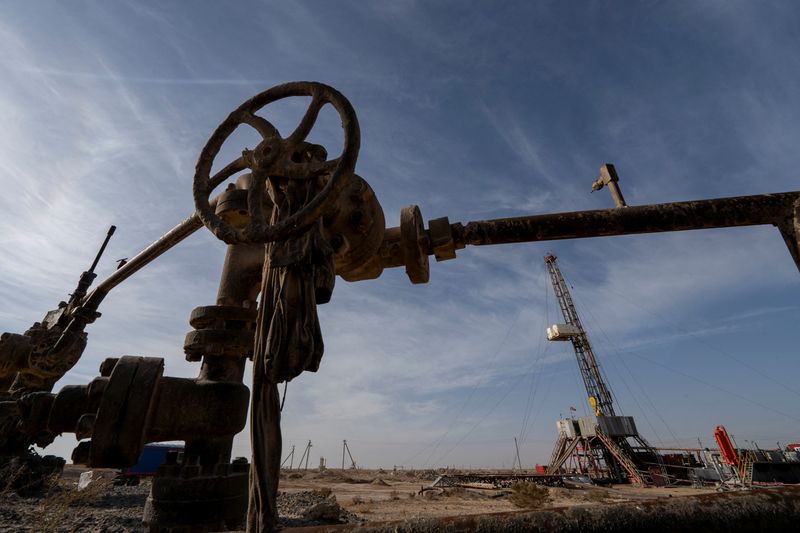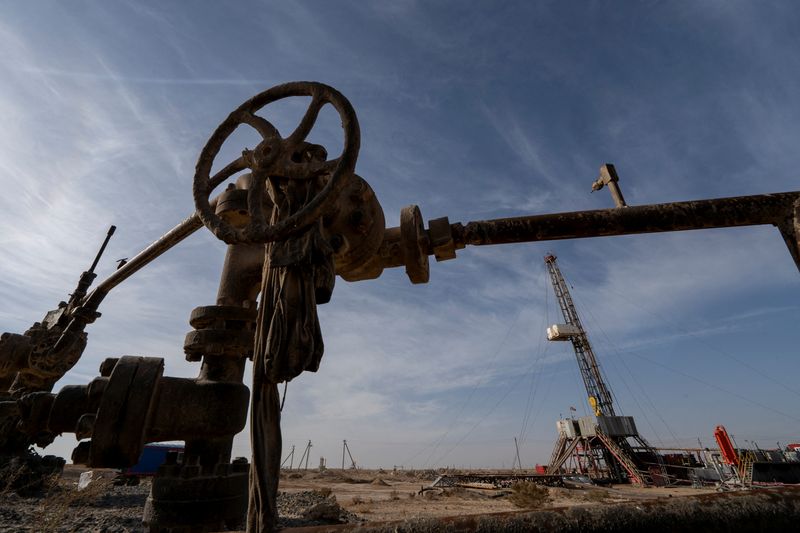Commodities
Oil settles at 8-month low after disappointing US job numbers

By Georgina McCartney
HOUSTON (Reuters) -Oil prices fell on Friday, settling at their lowest since January after data showed the U.S. economy added fewer jobs than expected last month, and weak Chinese economic data added more pressure.
futures settled down $2.71, or 3.41%, to $76.81 a barrel. U.S. West Texas Intermediate crude futures settled down $2.79, or 3.66%, at $73.52.
At their session lows, both benchmarks fell by more than $3 per barrel.
U.S. job growth slowed more than expected in July and unemployment increased to 4.3%, pointing to raising fears of a possible recession.
“We moved from a demand-driven market to a geopolitical one for maybe two days then we absolutely nosedived on all this economic data,” said Tim Snyder, chief economist at Matador Economics.
Economic data from top oil importer China and surveys showing weaker manufacturing activity across Asia, Europe and the U.S. raised the risk of a sluggish global economic recovery that would weigh on oil consumption.
Falling manufacturing activity in China also inhibited prices, adding to concerns about demand growth after June data showed imports and refinery activity lower than a year earlier.
Asia’s crude imports in July fell to their lowest in two years, sapped by weak demand in China and India, data from LSEG Oil Research showed.
Meanwhile, OPEC oil output rose in July, a Reuters survey found, as a rebound in Saudi Arabian supply and small increases elsewhere offset the impact of ongoing voluntary supply cuts by other members and the wider OPEC+ alliance.
The Organization of the Petroleum Exporting Countries pumped 26.70 million barrels per day (bpd) last month, up 100,000 bpd from June, according to the survey based on shipping data and information from industry sources.
An OPEC+ meeting on Thursday had left the group’s oil output policy unchanged, including a plan to start unwinding one layer of production cuts from October.

Oil investors are also watching the Middle East, where Lebanon’s Iran-backed group Hezbollah said its conflict with Israel had entered a new phase. Still, analysts noted no material disruption of oil supplies from the region as prices slumped to multi-week lows days after the killing of senior leaders of Iran-aligned militant groups Hamas and Hezbollah stoked fears of all-out war.
“Oil has been pumped up on just extraordinary jitters over the Middle East situation but here we are several days after a significant event,” said John Kilduff, partner at Again Capital in New York.
Commodities
Oil prices rise; U.S. crude inventories plunge, Russia-Ukraine truce eyed
Commodities
India’s Reliance to stop buying Venezuelan oil over US tariffs, sources say
Commodities
Oil prices climb on Venezuela supply worries

 Forex3 years ago
Forex3 years agoForex Today: the dollar is gaining strength amid gloomy sentiment at the start of the Fed’s week

 Forex3 years ago
Forex3 years agoUnbiased review of Pocket Option broker

 Forex3 years ago
Forex3 years agoDollar to pound sterling exchange rate today: Pound plummeted to its lowest since 1985

 Forex3 years ago
Forex3 years agoHow is the Australian dollar doing today?

 Cryptocurrency3 years ago
Cryptocurrency3 years agoWhat happened in the crypto market – current events today

 World3 years ago
World3 years agoWhy are modern video games an art form?

 Commodities3 years ago
Commodities3 years agoCopper continues to fall in price on expectations of lower demand in China

 Economy3 years ago
Economy3 years agoCrude oil tankers double in price due to EU anti-Russian sanctions

























